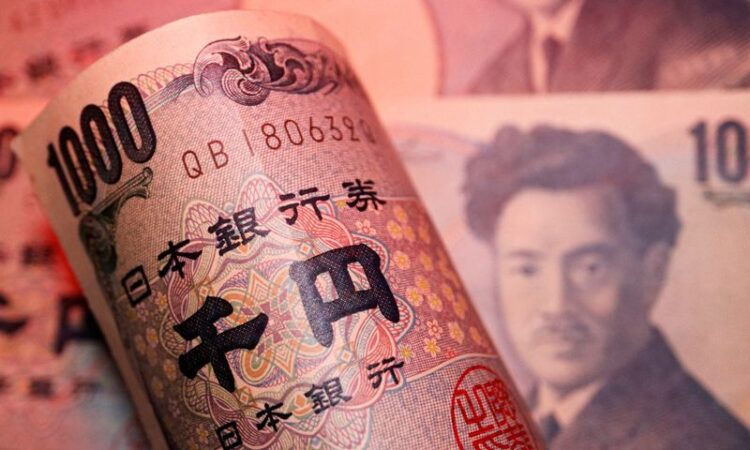
By Ankur Banerjee
SINGAPORE (Reuters) – The yen was volatile on Friday after a sharp surge in the previous session in the wake of U.S. consumer prices unexpectedly dropping in June, stoking speculation that Tokyo had intervened to lift the currency away from 38-year lows.
The Japanese currency swung between gains and losses and was last at 158.90 per dollar in Asian hours, having spiked nearly 3% to as high as 157.40 immediately after the CPI report published on Thursday.
News outlet Asahi, citing government sources, said officials intervened in the currency market while a Nikkei report, also citing sources, said the BOJ conducted rate checks with banks on the euro against the yen on Friday.
Tokyo’s top currency diplomat, Masato Kanda, said on Friday authorities will take action as needed in the foreign exchange market but declined to comment on whether authorities had intervened.
The usual absence of any official comment on intervention leaves investors guessing and focus will now be on data due at the end of the month that shows whether authorities did step in or not.
“The reaction from yen to the latest two rounds of suspected intervention has been very different,” said Charu Chanana, head of currency strategy at Saxo.
“Japanese authorities need to follow-up with more measures such as stern verbal intervention, or better-still, tightening at the BOJ July meeting.”
Tokyo intervened in April end and early May, spending roughly 9.8 trillion yen to support the currency.
However, the yen has since gone beyond those levels, touching a 38-year low of 161.96 last week as the wide difference between U.S. and Japan rates weighed.
This gap has created a highly lucrative trading opportunity, in which traders borrow the yen at low rates to invest in dollar-priced assets for a higher return, known as carry trade.
“Looks like it will be a volatile day today with markets nervous about intervention but carry still very attractive to short the yen and the shift in the fundamental story is only marginal after last night’s cooler U.S. CPI,” said Saxo’s Chanana.
The surge in yen was triggered after data on Thursday showed U.S. consumer prices fell for the first time in four years in June, firmly putting disinflation back on track and keeping an interest rate cut from the Federal Reserve on the table.
Tom Hopkins, senior portfolio manager at BRI Wealth Management, said the CPI report should bring further confidence to markets.
“Despite not being quite there yet, the road is open to a rate cut in the near term and we still expect the Federal Reserve to reduce a restrictive federal funds policy rate by 25 basis points in September,” Hopkins said.
Traders are pricing in 93% chance of the Fed cutting rates in September, compared with 73% before the CPI reading, CME FedWatch tool showed. Markets are pricing in 61 basis points of easing this year.
The dollar as a result has been on the defensive, with the dollar index, which measures the U.S. currency against six rivals, was at 104.38, not far from the one-month low of 104.07 it touched on Thursday.
The euro last fetched $1.087325, just below the one month high of $1.090 touched on Thursday.
Sterling was hovering close to the nearly one-year high hit on Thursday and was last at $1.2922 after data showed the UK economy grew more quickly than expected in May, potentially lowering the chances of an August rate cut.
(Reporting by Ankur Banerjee in Singapore; Editing by Sam Holmes)
